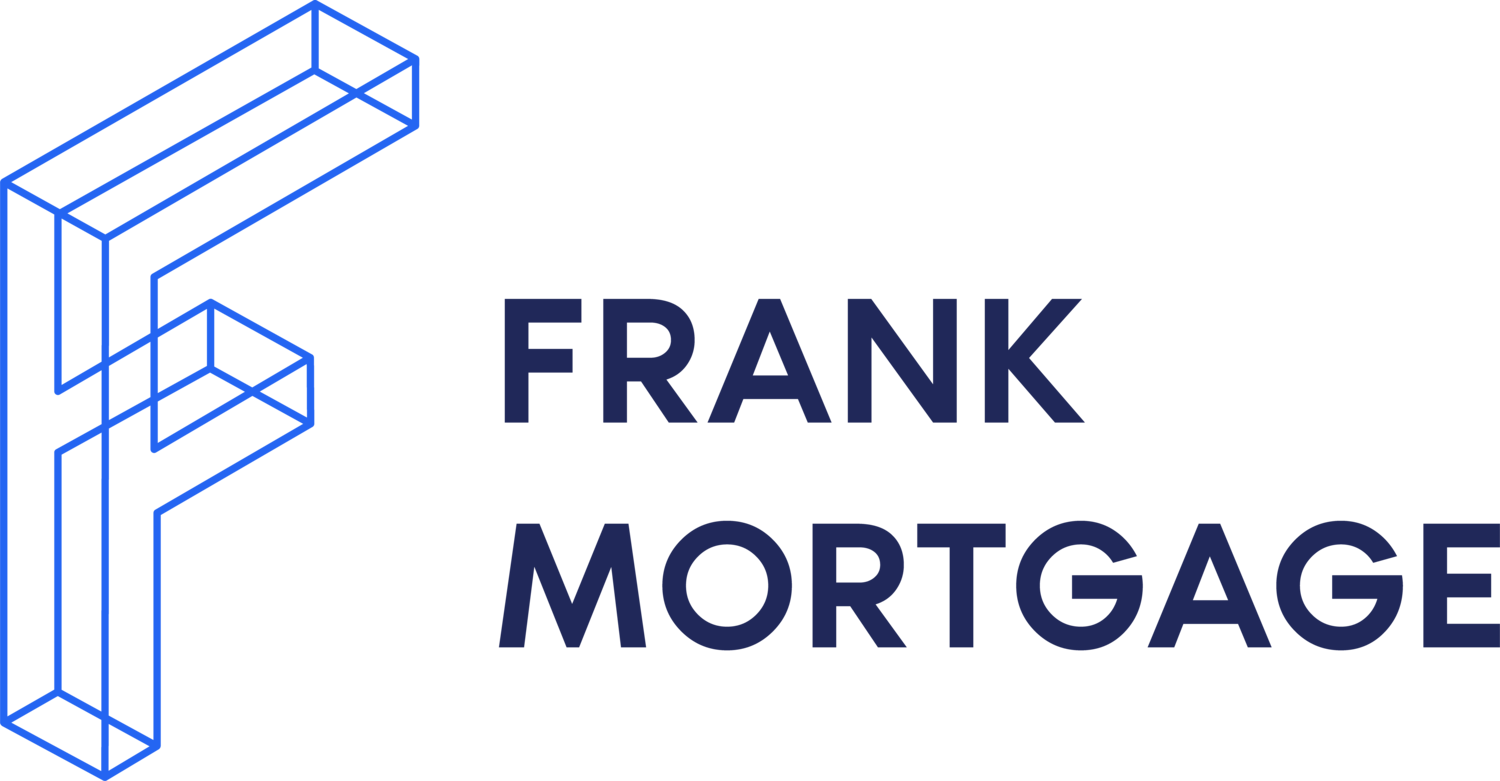Navigating the 2025 Canadian Housing Market
Better Times are Inevitable

The Canadian housing market isn’t just about interest rates and sales figures—it’s about people building their lives. Behind every transaction is a family looking for stability, a couple buying their first home, or an individual investing in their future. It’s as much about dreams and security as it is about dollars and data.
Today’s generation of homebuyers faces unfamiliar challenges. In 2025, housing affordability is stretched and while families try to determine what they can afford, political uncertainties give them reason for pause. The Canadian housing market is in the middle of a down period, as home sellers hold firm on their asking prices while supply grows, and sales volumes decline.
How can you achieve your objectives in today’s mortgage and housing market? What might allow the market to return to a healthy level of activity? Let’s explore the state of the market and the keys to the way forward.
The Current State of the Canadian Housing Market
The Canadian housing market in 2025 is marked by a standoff between buyers and sellers, compounded by economic uncertainty. According to the Canadian Real Estate Association (CREA), national home sales in March 2025 reached 35,517, a seasonally adjusted 4.0% decrease from February and a significant year-over-year decline. Meanwhile, new listings have increased, with active listings rising across most markets, particularly in Vancouver, Calgary, Toronto, and Montreal. The sales-to-new-listings ratio (SNLR) dropped to 46% in March 2025, down from 50% in February, signaling a shift toward a buyer’s market where supply outpaces demand. Recent home sales data for Toronto indicates the situation may be getting worse – sales were down 23.3% in April and prices were down 5.4%.
Average home prices reflect this softening. CREA reports the national average home price was $678,331 in March 2025, down 2.9% year-over-year, with the MLS® Home Price Index (HPI) showing a modest 0.4% month-over-month increase but a 2.1% annual decline. Regional variations stand out. Alberta and Saskatchewan remain seller’s markets with SNLRs of 60% and 69%, respectively, while Ontario and British Columbia see weaker demand due to affordability challenges.
This gap between supply and sales may suggest a market in search of actual price discovery. For comparison, in the U.S., Redfin notes that sellers have been asking for 9% more than eventual final sale prices, reflecting unrealistic initial expectations. While specific Canadian data on this gap is unavailable, the increasing inventory and declining sales imply a similar trend. Sellers accustomed to the high prices of 2021–2022 may be reluctant to adjust to current market realities, leaving buyers, even those armed with mortgage pre-approvals, frustrated with unaccepted offers.
The Impact of Tariff Uncertainty and Canada-U.S. Relations
A significant factor holding back the housing market is uncertainty surrounding U.S. tariffs and Canada-U.S. relations. The threat of tariffs on Canadian exports has had a chilling effect on Canadian consumer confidence. A Royal LePage survey found that 49% of prospective homebuyers have paused their plans due to trade disputes, fearing job losses and economic instability.
Tariffs could suppress economic activity, leading to a recession and potential job losses. They could also increase construction costs, thereby increasing homebuilding costs, potentially reducing new housing starts and exacerbating supply constraints over time. Now that the Canadian election is over, hopes are high that our new government can come to a speedy resolution with the US.
The Bank of Canada (BoC) has not responded aggressively, although they did lower their policy rate to 2.75% by March 2025. While there are hopes for more cuts to stimulate the economy, Bank of Canada Governor Tiff Macklem has warned that monetary policy alone cannot offset a trade war’s economic fallout.
For mortgage customers, this uncertainty translates to hesitation. Even with lower interest rates, the fear of a tariff-induced recession potentially increasing unemployment or inflation makes committing to a mortgage feel risky. Variable-rate mortgage holders, in particular, face uncertainty if inflation spikes, though current forecasts suggest further BoC rate cuts of perhaps 75 basis points by year-end could keep variable rates attractive.
Why Aren’t Sales Volumes Picking Up?
The drop in sales volume isn’t solely due to a lack of buyers. Pent-up demand exists, particularly among millennials and first-time buyers, as noted by Canada Mortgage and Housing Corporation (CMHC). However, several factors are reducing market activity:
1. Pricing mismatch - sellers are listing at prices that don’t align with buyer expectations or affordability. The growing inventory suggests buyers have more choices, reducing pressure to meet high asking prices. If Canadian sellers are overpricing by a margin similar to the 9% gap seen in the U.S., this could explain the sluggish sales.
2. Affordability challenges - high-priced markets like Toronto and Vancouver remain unaffordable for many, with price to earnings ratios north of 10%. Despite lower mortgage rates, the cost of homeownership remains a barrier, especially for first-time buyers.
3. Economic hesitancy - tariff fears, potential job losses and a weaker Canadian dollar are causing buyers to adopt a “wait-and-see” approach. This hesitancy is evident in recent declines in housing sales figures.
4. Mortgage renewal pressures - homeowners renewing mortgages from the ultra-low rates of 2020–2021 face payment shocks, even with declining rates. RBC notes that this could force some to sell, adding to inventory but also tempering price growth. Renewal economics and pressures are also reducing investor demand in the market.
What Will It Take to Revive the Market?
To boost sales volumes and benefit mortgage customers, several conditions must align:
1. Realistic seller pricing - sellers need to adjust expectations to match current market conditions. A correction in asking prices, potentially closing the gap between listed and sold prices, could encourage buyers to act, increasing sales volumes. Mortgage brokers can help clients navigate these opportunities by securing pre-approvals to act quickly in a softening market.
2. Stabilization of Canada-U.S. relations - a resolution to the tariff situation would restore consumer confidence. Even if tariffs are implemented but only at a 10% rate, as some suggest is possible, economic headwinds could ease, confidence could return, and buyers may be encouraged to re-enter the market.
3. Continued rate cuts - the BoC’s ongoing rate reductions are stimulative. Fixed-rate mortgages may see only modest improvements, while variable-rate mortgages, which move in lockstep with the Bank of Canada policy rate, could become more attractive with further cuts.
4. Policy support - recent mortgage rule changes, such as expanded 30-year amortizations for first-time buyers and new builds, are having a positive impact. Further incentives, like easing the mortgage stress test, could unlock more buyers.
5. Economic recovery – a new federal government has reason to encourage more development of Canadian resources to stimulate growth. Increased interprovincial trade would also be positive. Combine those opportunities with a potential easing of the US-initiated tariff dispute and there is potential for a period of strong growth beginning soon.
Unleashing Pent-Up Demand
Despite affordability challenges in high-priced markets, significant pent-up demand exists. CMHC highlights that millennials, many of whom are first-time buyers, are driving housing demand, particularly in urban centers as remote work declines. If the market correction stabilizes and economic and political uncertainties ease, this demand could be unleashed, benefiting mortgage customers in several ways:
- First-time buyers - lower rates and more realistic pricing could make homeownership accessible. Pre-approvals and variable-rate mortgages could help these buyers capitalize on opportunities.
- Move-up buyers - homeowners looking to upgrade may find more listings at reasonable prices, especially if forced sales increase due to renewal shocks. Mortgage brokers can tailor solutions, such as bridge financing, to ease transitions.
- Investors - softer condo markets in Toronto and Vancouver may offer opportunities for new investors, though caution is needed due to market softness.
While home buying demand could be unleashed if conditions improved it is also worth noting that there is currently a refinance opportunity for many existing borrowers. Mortgages that were struck since 2022 may have been done at much higher rates than today. A refinance into a lower rate mortgage may offer some payment relief and save money over time. Be cautious and aware of prepayment penalties, however.
Advice for New Mortgage Customers
As a new mortgage customer, looking to enter the housing market you are a key to the reinvigoration of the market. Here are some tips on navigating the 2025 housing market:
- Get pre-approved - understand your budget and lock in a rate for up to 120 days to protect against potential rate hikes. You can read more about pre-approvals here - frankmortgage.com/blog/mortgage-pre-approval
- Explore rates - consider fixed versus variable, staying within your risk appetite. Be cautious and consult with a good mortgage broker. With BoC rate cuts likely, variable-rate mortgages could offer savings, especially for those comfortable with some risk. Alternatively, a five-year fixed rate can permit you to lock in a payment, make an affordable budget for the next five years and not have to worry about the headlines and interest rate volatility.
- Focus on affordable markets - location flexibility can work in your favour. Consider cities and regions where prices are more accessible.
- Work with an experienced mortgage broker – a national mortgage broker can compare rates, negotiate terms, and tailor solutions to your financial goals, whether you are buying, renewing, or refinancing.
- Monitor trade developments - stay informed about Canada-U.S. trade talks, as tariff resolutions could signal a market rebound, creating urgency to act.
- Focus on what you can control - make sure you are prepared to enter the market when the opportunity arises. Continue increasing your down payment savings and pay down some debts. Maximize your credit score so you can get the best mortgage result.
Conclusion
The 2025 Canadian housing market is in a down period. Rising supply, declining sales, and economic uncertainty driven by U.S. tariff threats are steering the market towards a correction. While sellers holding out for high prices are contributing to the sales slump, pent-up demand waits in the wings, ready to be unleashed if pricing aligns, rates remain low, and trade tensions ease. For mortgage customers, this is a time to strategize. Secure pre-approvals, explore rates, and consider affordable markets. At Frank Mortgage, we are here to guide you through every step, ensuring your homeownership journey is affordable and stress-free.
Contact us today at www.frankmortgage.com or
1-888-850-1337 to discuss your personalized mortgage strategy and seize the opportunities in this evolving market.
About The Author

Don Scott
Don Scott is the founder of a challenger mortgage brokerage that is focused on improving access to mortgages. We can eliminate traditional biases and market restrictions through the use of technology to deliver a mortgage experience focused on the customer. Frankly, getting a mortgage doesn't have to be stressful.






